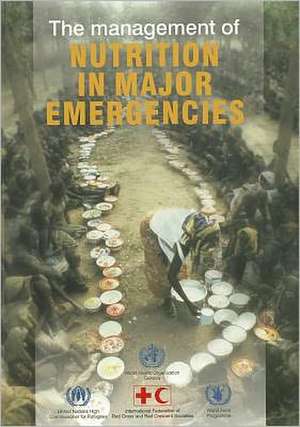The Management of Nutrition in Major Emergencies: A Manual for Managers and Policy-Makers
en Limba Engleză Paperback – 29 feb 2000
Preț: 412.73 lei
Preț vechi: 434.46 lei
-5% Nou
Puncte Express: 619
Preț estimativ în valută:
78.98€ • 86.13$ • 66.59£
78.98€ • 86.13$ • 66.59£
Comandă specială
Livrare economică 03-17 aprilie
Doresc să fiu notificat când acest titlu va fi disponibil:
Se trimite...
Preluare comenzi: 021 569.72.76
Specificații
ISBN-13: 9789241545204
ISBN-10: 9241545208
Pagini: 236
Dimensiuni: 210 x 294 x 13 mm
Greutate: 0.96 kg
Editura: World Health Organization
ISBN-10: 9241545208
Pagini: 236
Dimensiuni: 210 x 294 x 13 mm
Greutate: 0.96 kg
Editura: World Health Organization
